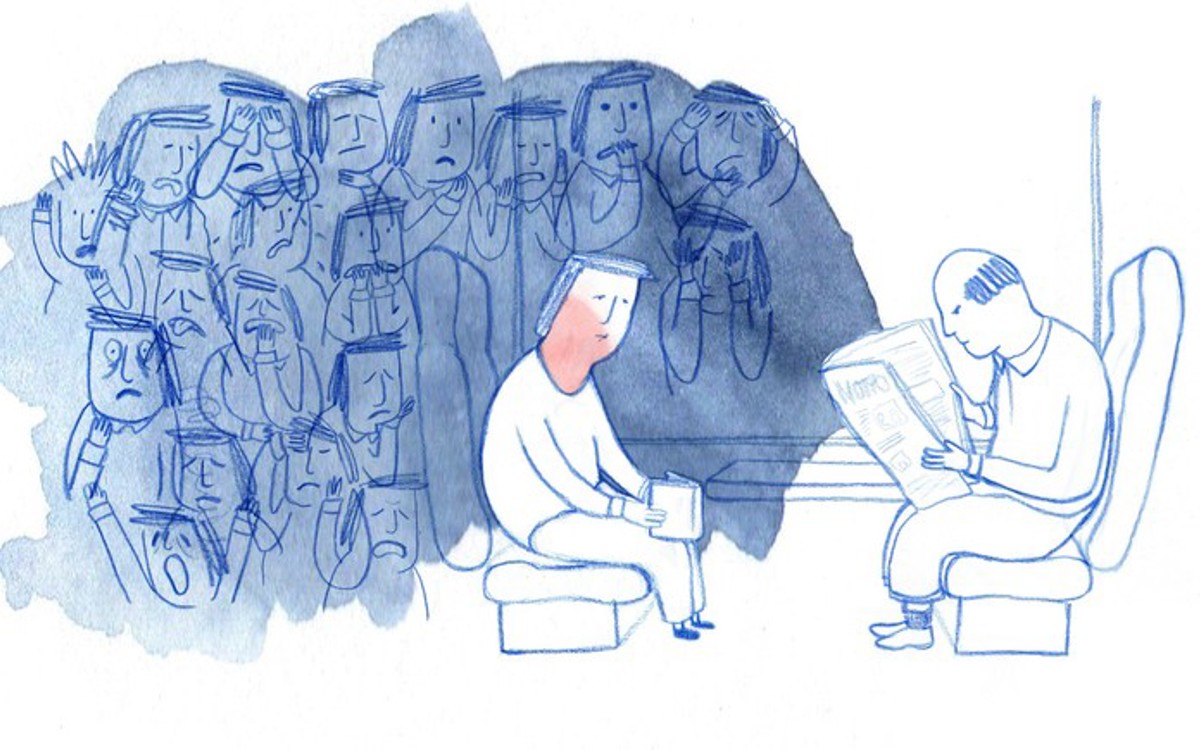Stereotypes and stigma mean that many young men are struggling in silence with their mental health. By Rob Whitley, McGill University, Canada

Stereotypes and stigma mean that many young men are struggling in silence.
By Rob Whitley, McGill University, Canada
Suicide is the leading cause of death for young men in many Commonwealth nations, including Australia, New Zealand, and the UK. In fact, men account for 70% of suicides across the globe, rising to over 80% in African Commonwealth countries such as Ghana, Kenya, and South Africa.
Men also make up over 75% of people with substance abuse disorders, which typically begin in early adulthood and can take a destructive toll on education and employment. Such disorders can increase the risk of injury, accidents, and even death. Indeed, statistics suggest that over 80% of drug overdose and alcohol poisoning deaths are male, indicating that gender gaps in suicide and substance use are literally a matter of life and death.
These statistics are prompting growing interest in the wider social challenges and underlying issues that may be influencing such high rates of mental distress in young men. So what is going wrong and what needs to change?
Failure to launch
Mounting evidence indicates that young men and boys are facing increasing difficulties in completing an education and entering the workforce – a phenomenon sometimes known as ‘failure to launch’. This experience can leave young men bereft of meaning and purpose in life, creating disaffection and alienation from society.
For example, evidence suggests that boys are performing significantly worse than girls in terms of educational attainment in many Commonwealth countries. In Canada, the high school drop-out rate for boys is around double that of girls, and around one in five Canadian boys do not graduate high school. Men are often underrepresented in tertiary education too, making up around 40% of university students in the UK and Canada. In Caribbean nations such as Barbados, Guyana and Jamaica, young women are more than twice as likely to go to university compared to young men.
Surveys also indicate that young men are disproportionately represented in the ‘not in education, employment nor training’ (NEETs) category. For example, recent UK statistics document 191,000 male NEETs aged 16-24, compared to 124,000 female NEETS in the same age group. In Canada, the NEET rate for 25-29 year old men is twice that of women. This may contribute to a gender gap in housing arrangements too, with 47% of Canadian men in their 20s still living with their parents, compared to 38% of Canadian women.
This experience of ‘failure to launch’ may also contribute to abnormally high rates of loneliness in young men across the globe: a recent study found that almost one in three millennial men always or often felt lonely, and just over a quarter had no close friends. These rates were almost double the rates of loneliness seen in baby-boomer men, and higher than rates for millennial women.
Importantly, a large corpus of research indicates that factors such as low educational achievement, unemployment, and loneliness are strong determinants of mental health outcomes, including substance misuse, depression, and suicide. The gravity of this situation has been recognised by many official bodies, including the UK Parliament, which launched an inquiry into the mental health of men and boys in 2019. There have been calls for similar initiatives in other Commonwealth countries, and I recently met with the Canadian Minister of Justice, imploring him to instigate a similar inquiry.
Social stigma
These issues are compounded by derogatory stereotypes and social stigmas, commonly directed at men with mental health problems. These can take various forms and occur within families, institutions, and society as a whole. Importantly, these stigmas play a key role in deterring men from seeking help and discussing their mental health issues with others.
For example, I recently completed a study with one of my graduate students, Will Affleck, to examine the wider psychosocial experience of men with mental health issues. In the study, many men reported that these issues reduced their ability to be a family breadwinner. Instead of receiving sympathy and support, some participants reported that their spouses would attempt to ‘shame’ them into greater achievement by constantly reminding them of their ‘failures’. This was a distressing experience, and discouraged men from talking further about their mental health issues.
Similarly, some studies indicate that the state and society may act in an empathic manner towards women with mental illness, while responding more punitively towards men with mental illness – a manifestation of the stereotypical ‘female victim/ male villain’ dichotomy. In another study, I found that the media tend to use stigmatising and derogatory language to describe men with mental illness, whereas women tend to be depicted in more empathic and compassionate terms – an example, perhaps, of the well-known gender empathy gap.
Other research indicates that young men with mental health issues and criminal justice involvement are more likely to receive harsher treatment from the authorities. One study found that men receive 63% longer sentences than women for similar crimes, and are twice as likely to go to prison. This punitive and unforgiving approach can particularly affect men with substance use disorders, who may be treated severely for relatively minor crimes (such as cannabis possession), which can then impede their ability to find a job and further contribute to ‘failure to launch’.

Help and healing
Worryingly, evidence suggests that young men underutilise official mental health services. Figures indicate that men make up around 30% of official mental health service users, with particularly low rates of usage among young men. While social stigma is a key factor, evidence suggests that several other factors are at play.
Importantly, there are many different modalities of healing, and some studies indicate that men avoid mental health services due to perceptions that these services are ‘feminised’ and unresponsive to men’s preferences. For example, research indicates that men are often averse to formal one-on-one talk-based therapies, instead preferring informal action-based or skill-based mental health interventions. Mental health systems rarely offer such options, however, and typically proceed on a ‘one-size-fits-all’ foundation.
This lack of choice may deter men from using services, and this was the conclusion of a recent review paper from the University of Melbourne. The paper found a paucity of effective programmes to improve the wellbeing of young men, with the authors noting that ‘male targeted interventions may be more beneficial for young men than gender neutral programs’.
This paucity of male-friendly gender-sensitive mental health interventions means that young men are desperately scrambling to obtain mental, social, and emotional support from other sources – some of which may be unsavoury. Another student (JunWei Zhou) and I recently completed a research study aiming to understand why young men get involved in the ‘seduction community’ – also known as ‘pick-up artists’. This is a multi-million dollar industry with tens of thousands of young male participants across the world. The ostensible aim of this community is to improve men’s ‘success with women’, but we found that many men were using it as an unofficial mental health service. Participants regularly told us that they joined the community as a last resort, in an attempt to address a range of psychosocial issues such as struggles with mental illness, loneliness, social anxiety, shyness, and a lack of male role models or guidance.
Many study participants noted that they were raised by single mothers in broken homes – a common experience in countries like Canada, where the divorce rate is over 40%. These participants frequently noted that this absence of male role models and guidance was detrimental to their mental health. This finding overlaps with the existing literature, which indicates that father-absence can have a devastating effect on the psychosocial development of growing boys and young men.
Men often joined the ‘seduction community’ in an attempt to fill a psychosocial vacuum, finding the informal male-led and male-focused nature of this community appealing and engaging. This suggests the importance of innovation within the official mental health system, with a need for alternative male-led and male-focused support for young men.
The university context
As stated above, there are gender differentials in rates of university attendance, youth unemployment, and failure to launch, with young men typically faring worse than young women. These factors have been identified as social determinants of health, and can contribute to elevated rates of suicide and substance abuse in young men.
Given these dramatic gender differences, it could be expected that universities would be frantically investing in programmes that promote male engagement in tertiary education, as well as creating policies that foster a welcoming and inclusive environment for male students.
Sadly, this is not always the case, with some arguing that universities in some countries have become hostile to men and masculinity. While there are numerous well-funded groups, programmes, and offices on campuses to address women’s issues and advocate for female students, there are few groups or programmes focused on men’s issues and the engagement of male students. Women’s groups and programmes often receive official support from various quarters and are rarely seen as controversial, whereas the few groups which have attempted to organise discussions about men’s issues have been refused accreditation by student unions; some have even been met with violent protest.
University academics and administrators can sometimes contribute to moral panics about male students by using stigmatising all-encompassing language. Concepts such as ‘rape culture’ and ‘toxic masculinity’ were coined and championed in academia and are sometimes used by university administrators as blanket terms in relation to male students. Such unvalidated and non-scientific concepts implicitly portray all male students as potential barbarians, and could again be considered a sexist and slanderous rendering of the stereotypical ‘female victim/male villain’ dichotomy. This may discourage male enrolment and harm the mental health of vulnerable male students.
The way ahead
Greater public and political attention should be paid to young men’s mental health – especially at universities, where male students in some countries may feel particularly marginalised. Three specific measures may help.
First, universities should encourage the formation and expansion of grassroots groups devoted to discussing and addressing the above-described men’s issues. Such groups should receive official funding and recognition, and should have a seat at the table in wider discussions about gender issues, as well as discussions about promoting enrolment and retention of underrepresented students.
Second, universities should offer greater choice in their provision of mental health services to ensure that these are accessible and inclusive to male and female students alike. One approach could be the formation and funding of skill-based male-led and male-focused group interventions centred on skill acquisition, personal development and mentoring, with an emphasis on positive pro-social solutions.
Third, university administrators and associated programmes should end the use of stigmatising all-encompassing concepts that slander male students. Any policies or practices reliant on such harmful stereotypes should be dismantled, and replaced with policies and practices that encourage the full inclusion and participation of all students, regardless of gender.
Such efforts may help address the oft-ignored psychosocial problems plaguing a growing number of young men in our society.
Dr Rob Whitley is an Associate Professor in the Department of Psychiatry at McGill University, Canada.
Images (from top): main image by erhui1979 at iStock. Illustration by Jasmine Parker at the Wellcome Collection, licensed under CC BY-NC 4.0.
